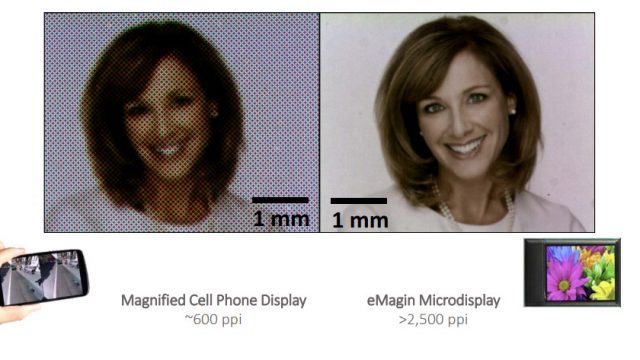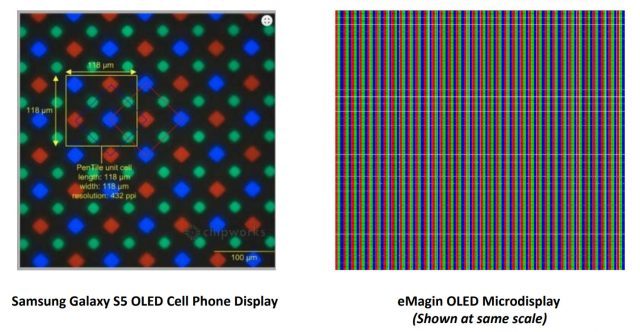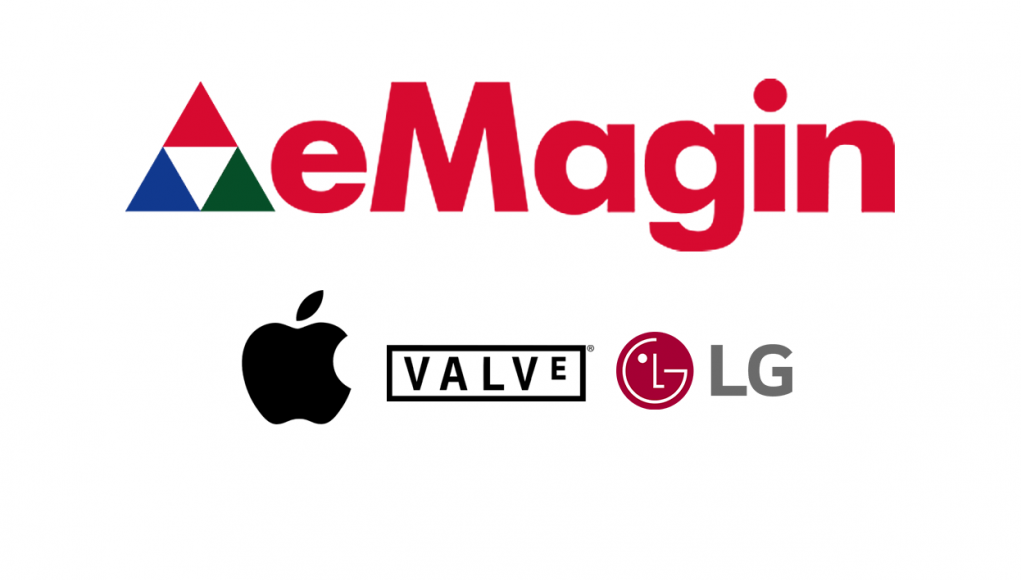According to documents filed last month with SEC, participation of a new stock issuance of some $10 million by OLED microdisplay maker eMagin was offered to Apple, Valve, and LG, among others, though those companies didn’t end up participating in the deal, Emagin says.
Update (2/12/18): An earlier version of this article stated that Apple, LG, and Valve had participated in Emagin’s new stock offering; according to a press release issued by Emagin today, the companies ultimately didn’t participate in the deal. While the company had filed documents with SEC on the 25th of January listing the companies as “specified investors” in the deal, none of those companies took part in the deal by the time it had closed on January 29th, according to Emagin. We’ve reached out to the company for additional information surrounding the deal and Emagin’s involvement with Apple, Valve, and LG.
According to a report from Bloomberg, “Emagin listed those companies in the filing because it had discussions with [the companies] at industry events,” the company reportedly told the publication.
Original Article (2/10/18): Founded in 1993, Emagin is a producer of OLED microdisplays which have seen deployments in military, medical, industrial, and other sectors. With the rise of AR and VR in the consumer market, Emagin has recently marketed their display technology toward companies building consumer headsets.
The company’s flagship product in this space is a 2,048 × 2,048 OLED microdisplay with a ~70% fill factor, which the company claims will eliminate the ‘screen door effect’ seen on today’s consumer VR headsets.

According to SEC filings submitted on January 22nd, Emagin prepared to sell some $10 million in newly issued stock, with Apple, Valve, and LG, among others, listed as the offering’s “specified investors.” According to Emagin, the deal was expected to close on or about January 29th.
We speculated recently that Apple’s latest VR patent for compact VR optics could be intended for use with a microdisplay; this investment could be another clue in favor of that hypothesis.
As for Valve, the company’s chief, Gabe Newell, said back in 2017 that he expected VR display technology to make great strides in 2018 and 2019; a timeline which may have been guided by the company’s involvement with Emagin:
“We’re going to go from this weird position where VR right now is kind of low res, to being in a place where VR is higher res than just about anything else, with much higher refresh rates than you’re going to see on either desktops or phones. You’ll see the VR industry leapfrogging any other display technology. You’ll start to see that happening in 2018 and 2019 when you’ll be talking about incredibly high resolutions.”
LG is also known to be in the VR game. The company previously released a mobile microdisplay-based headset, the LG 360 VR, and is further working on a tethered desktop headset which it revealed last year but has kept under wraps since.
– – — – –
Emagin’s SEC filing actually gives us a pretty likely idea of exactly why these companies are involved: volume. In the document the company describes some of its recent business activities.
On the commercial front, we entered into strategic agreements with multiple Tier One consumer product companies for the design and development of microdisplays for consumer head mounted devices and, together with these companies, negotiated with mass production manufacturers for higher volume production capabilities.
That certainly makes it sound like Apple, Valve, LG, and perhaps others, formed something of a coalition to create sufficient demand to help Emagin achieve large enough initial volume for mass production at reasonable prices. The company expects the displays to be available in large quantities beginning in mid-2018.

Emagin’s latest 2K × 2K OLED microdisplay is said to use 9.3µm square pixels with an RGB stripe subpixel arrangement, and, crucially for AR and VR use, also offers low persistence capabilities thanks to a high frame-rate and global illumination. While the company’s website presently lists the display as being capable of 500 nits, the SEC documents indicate that a much brighter 5,300 nit version has been demonstrated, which the company says “surpasses” the needs of AR and VR headsets.







